AI at Work
The Future of Generative AI: How Agentic AI Is Changing Content Workflows

Dhruv Sood · Product Manager
September 23rd, 2025 · 9 min read

For decades, marketing teams have adapted to their tools—learning complex interfaces, memorizing templates, and mastering prompt engineering just to get AI to understand their needs. We've trained ourselves to think like machines rather than expecting machines to think like us.
Agentic AI flips this script. Instead of learning rigid commands or hunting for the right template, agentic AI adapts to how we naturally work through simple, conversational interactions.
Before AI: Marketers had to craft every piece of content from scratch. This resulted in long production cycles, limited personalization at scale, and often led to inconsistencies in the output.
Imagine having to create 5 blog posts, 12 social media posts, 1 landing page, and 3 email sequences for a single product launch campaign. The result: One overworked content manager, delayed campaigns, and a constant backlog of content requests from other departments waiting in line.
With Gen AI: Things changed with gen AI as it handled the heavy lifting of initial content creation. You could prompt the AI to generate a first draft for your blog or a quick email for a promotional campaign, letting marketers focus on strategy rather than stare at blank pages. What used to take weeks now took a few days, and the scalability was higher due to AI's ability to generate multiple variations quickly.
However, this is still the "first wave" of AI adoption. Teams had to learn prompting, manage multiple tools, and still do significant manual coordination between different tools.
With Agentic AI: AI agents handle entire workflows through natural conversation. Instead of passively waiting for prompts, they proactively identify needs, coordinate with other systems, and execute end-to-end.
For that same product launch, the content manager simply says: "We're launching the new analytics feature next month. I need a full campaign targeting enterprise customers, focusing on ROI benefits."
Within minutes, the agent autonomously:
Researches competitor positioning and content gaps
Generates brand-compliant campaign assets
Reviews past performance data for optimization
Schedules content across all platforms
The AI agent understands context, executes complete workflows, and learns as it goes — finally making technology adapt to us.

How are content workflows changing with agentic AI systems?
Agentic AI transforms content workflows by introducing a more fluid, adaptive approach to content creation and management. Traditional content workflows tend to be quite rigid and effort-intensive, from brainstorming to create a comprehensive brief, to creating content that sounds like your brand, to manually publishing on the right channels at the right time.
Even with generative AI in the picture, it was hard to break away from this approach as the AI system still needs human intervention at each stage, like adding brand rules, assets, and more. It also lacks the flexibility to adapt to changing inputs, objectives, and data in real time.
AI agents, however, introduce adaptability and multi-directional coordination even though the process still feels familiar to users. Agentic workflows are not constrained to a fixed order; agents can skip, loop back, reprioritize, or parallelize tasks as goals or context change.
Typeface Arc Agents act as your AI teammates that have deep understanding of your brand and campaign requirements. Unlike single-purpose AI tools, Arc Agents can interpret ambiguous instructions, orchestrate across domains, and self-correct along the way.
Example
Example
You can ask Typeface chat to “Create an email campaign promoting our Fall offer”, select your brand kit, and attach the campaign brief. The Email Agent automatically kicks in to coordinate with the Brand Agent for your brand guidelines, scans past campaigns to suggest the best layouts, and generates multiple email variations for A/B testing.

Marketing AI agents can ask you follow-up questions to fill in any gaps in your request and even recommend next steps to improve outcomes. That’s not all. Typeface Arc Agents also show you the logical reasoning behind the creative decisions it makes to ensure the process is transparent.
Agentic AI thus changes your content workflow by:
Going from reactive to proactive: AI agents can act autonomously, without necessarily waiting for user instructions. For instance, if it needs more information to create a campaign it can carry out audience research on its own or look at past performance data integrating with APIs and tools, without users having to explicitly ask for it. This makes content production significantly faster, taking a lot of the pressure off marketing teams.
Building an iterative process: Unlike a linear Generative AI model, Agentic AI follows a cyclical workflow. It can involve multiple stages of evaluation and refinement, thereby constantly improving the quality and relevance of the content. For instance, the Typeface Agent can loop in different agents for different parts of a request autonomously, meaning you don't have to switch between tools or struggle to get the right output from a single AI tool. AI agents can also suggest next-best actions such as analyzing a campaign's performance or turning a post into an email sequence.
Improving adaptability: Agentic AI's ability to learn from past campaign performances, brand kits, and audience segments and remember such information allows it to make real-time adjustments to content, ensuring alignment with market trends and consumer preferences.
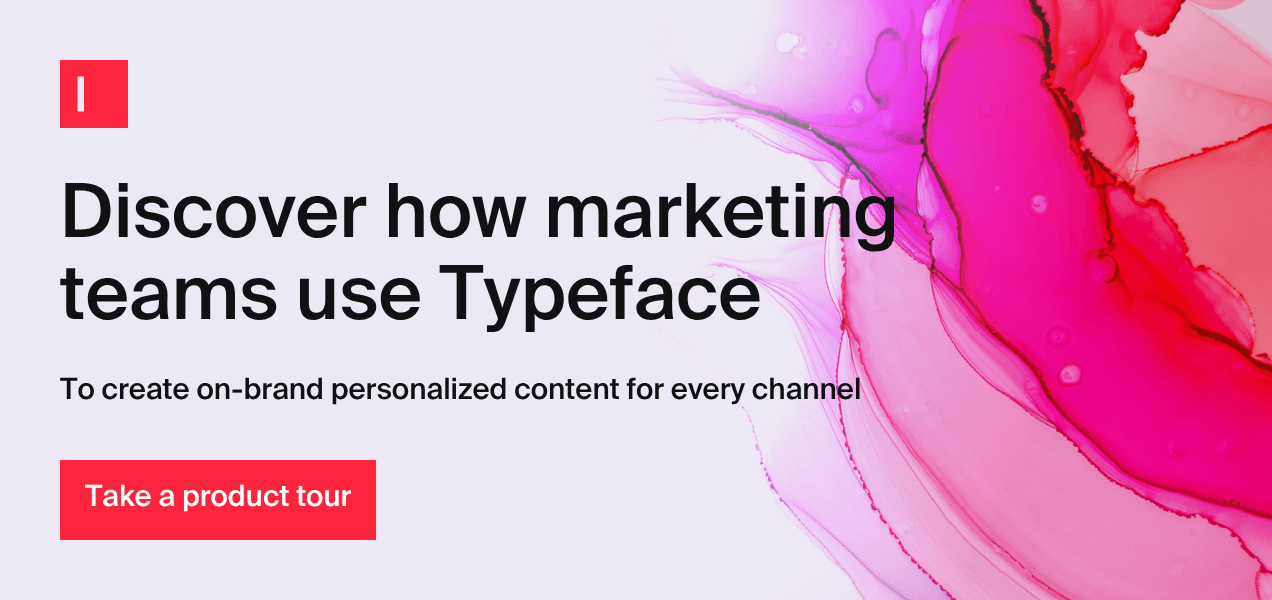
How asset management is changing with Agentic AI
The shift to agentic AI also revolutionizes asset management within content ecosystems. In traditional digital asset management (DAM) systems, assets are simply stored for users to retrieve and use when needed. Even with GenAI tools, users need to manually select assets and documents for the tool to use.
With agentic AI systems, your assets serve as a living, dynamic knowledge source that the AI agents can access autonomously to learn and remember information.
Example
Example
A major retailer maintains a centralized brand hub housing its brand guidelines (tone, voice, visual identity), assets (logos, images, video, style templates), audience personas, segments, and behavioral data.
An agentic AI system can access the brand hub to select the correct color palette, logo format, and phrasing for a social ad or cross-reference audience data to personalize messages and visual choices, dynamically adapting email subject lines or product recommendations for different customer segments. The agent may also scan which visuals or copy drive engagement across platforms, suggesting new content or updating outdated assets.
On Typeface, the Brand Hub serves as a unified source of truth — be it for your brand guidelines, audiences, assets, layouts, documents, or performance data. Typeface brings together all your scattered assets to create an accessible knowledge base, with automatic tagging, and our Creative Agent can then help you quickly find campaign material through automated semantic search.
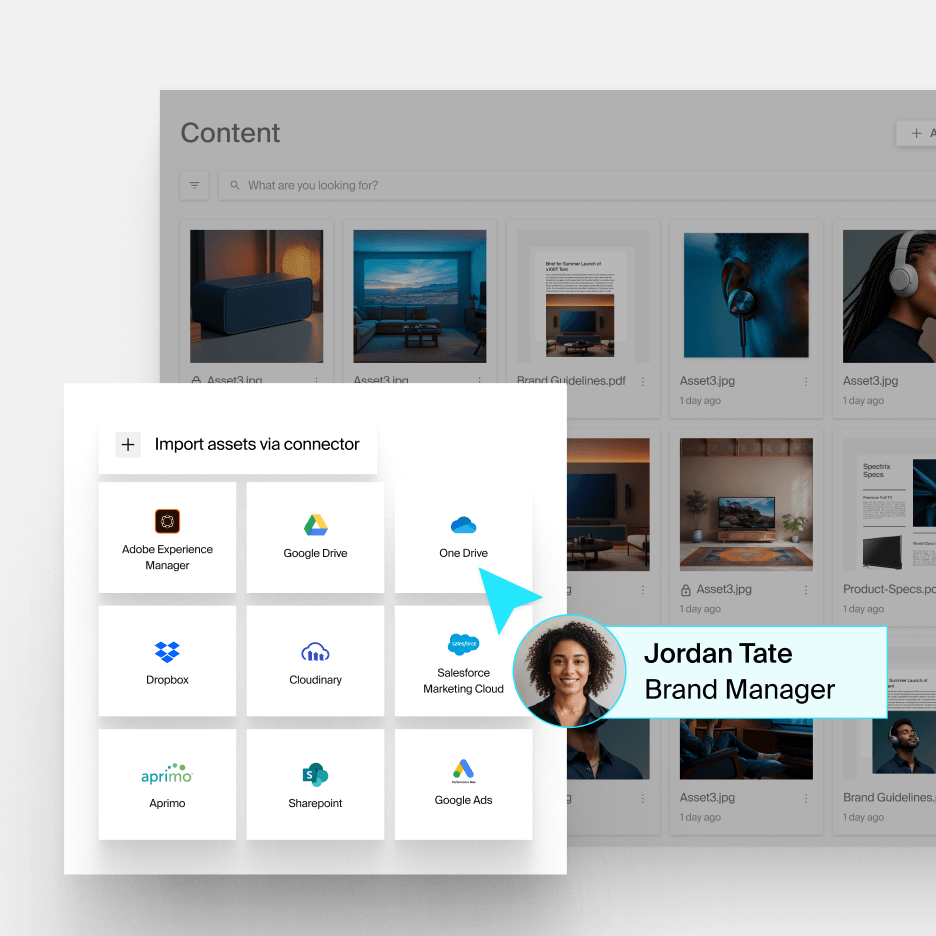
You can add new assets and documents during the course of campaign creation too, for the AI agents to incorporate in your content.
If your team is creating a customer success story, with traditional DAM systems, they'd have to search for relevant case study templates, hunt for the customer's logo files, find approved headshots, and locate performance metrics from different departments. Typeface Arc Agents, however, can identify the campaign or customer name and autonomously run a semantic search to pull the relevant assets from the Brand Kit.
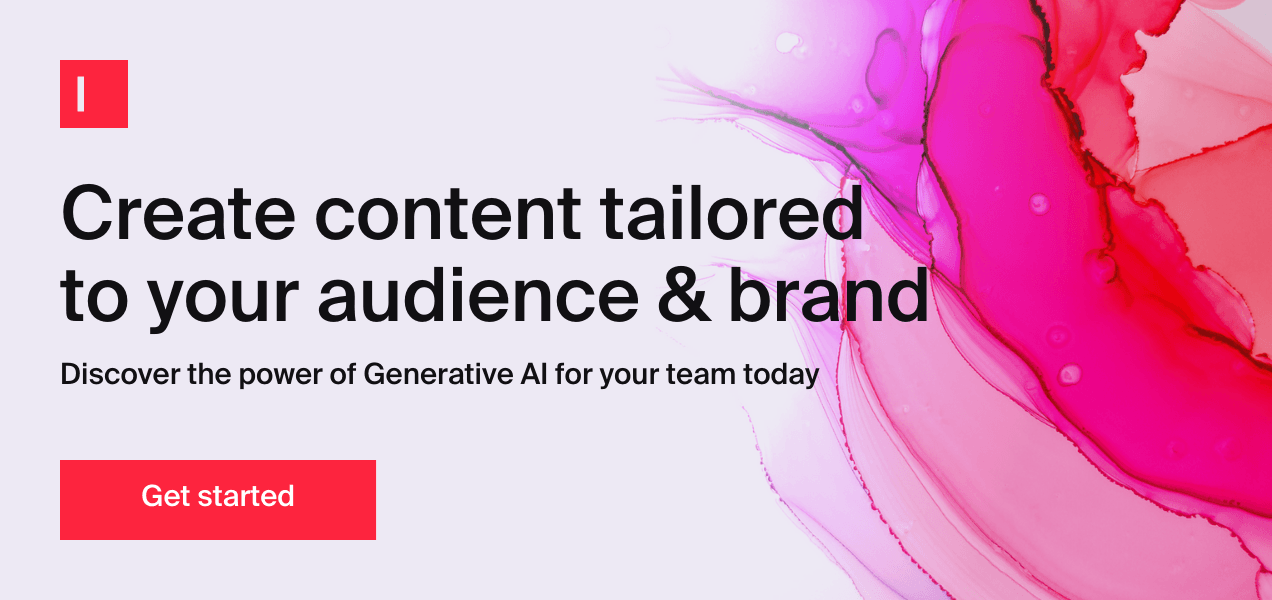
How AI agents integrate with existing systems
AI agents make for a deeply connected marketing ecosystem comprising not just of the AI tool on your AI marketing platform but your entire tech stack.
Typeface Agents can seamlessly gather data from your asset libraries, customer data platforms, marketing automation platforms, and more.
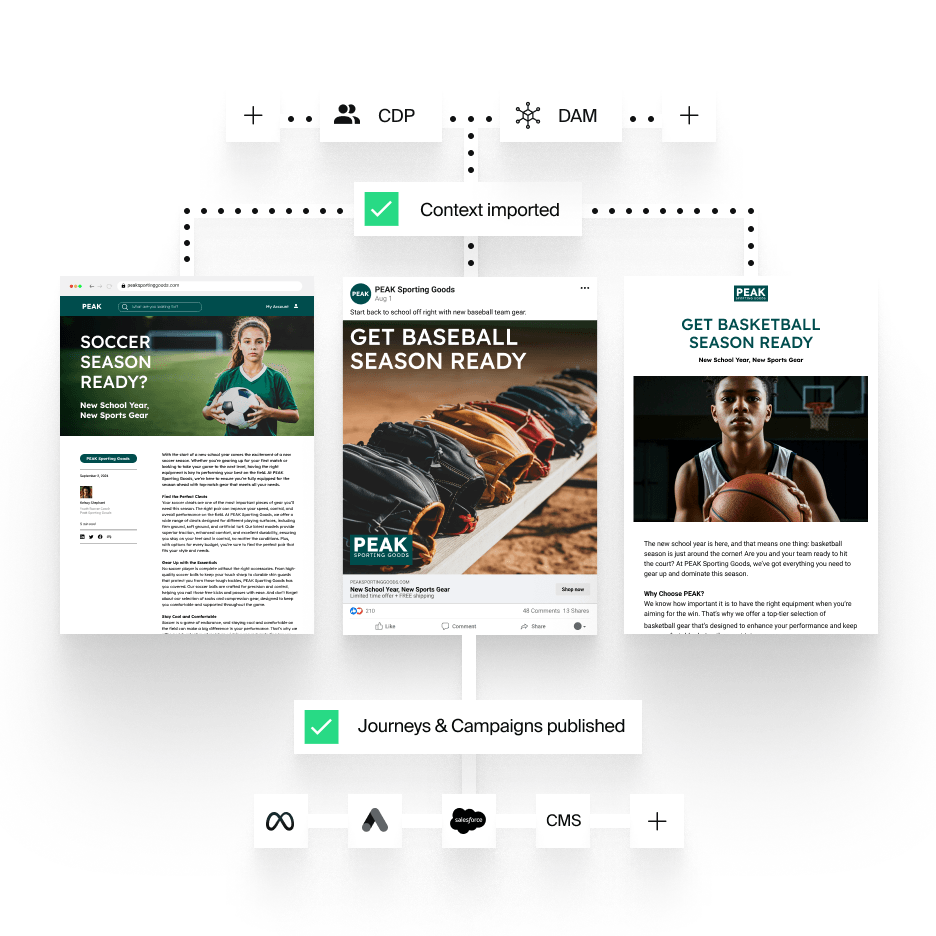
Our AI agents can also interact with agents from other systems in your tech stack, such as Agentforce, smoothly orchestrating complex content workflows powered by all the data your team needs.
Example
Example
Your demand generation team wants to create personalized LinkedIn ads for three different buyer personas. The Typeface Ad Agent initiates a conversation with your Salesforce agent, requesting audience insights for "enterprise IT decision-makers who visited our security page in the last 30 days."
The Salesforce agent responds with behavioral data showing these prospects downloaded whitepapers on compliance but haven't engaged with pricing content, plus demographic details like company size and industry vertical. Using this intelligence, the Typeface Ad Agent automatically generates three distinct ad variations personalized for each segment.

Frequently asked questions about Agentic AI
What is Agentic AI?
Agentic AI systems are designed to act autonomously and make decisions independently. As the name suggests, the AI acts like an agent or an extension of your team that understands natural language, answer questions contextually, and can also adapt responses to changing inputs. These agents leverage LLMs and reasoning to autonomously decide what actions to take and what inputs they would require to complete these actions.
AI agents can have an associated network of knowledge sources that they can call upon to gather context for the task at hand.
How is Agentic AI different from chatbots I'm already using?
While chatbots and many AI assistants respond to specific questions or commands, Agentic AI systems can take initiative, understand context, and make decisions independently. Think of a chatbot as a helpful customer service rep who follows a script, while an AI agent is more like a proactive team member who can solve problems on their own and create a script for problems they haven't seen before.
How secure is my company data when using AI agents?
This is a critical question for any business. AI agents do introduce new data security risks because they can autonomously access, process, and change company information — sometimes in unpredictable or unforeseen ways. Without stringent access controls and oversight, sensitive data (such as financial records, customer details, or confidential business insights) might be mishandled or exposed, especially since agents learn and adapt beyond the strict rules of traditional systems.
Typeface is designed to specifically mitigate these risks for enterprise users:
Granular access controls limit what agents can see and do, with policy-driven permissions and custom roles to ensure data segmentation and compliance.
Audit trails and monitoring record every action agents perform, so every asset accessed, edit made, or workflow triggered can be traced and reviewed by security teams.
End-to-end data encryption ensures that all your data is secure, while at rest or in transit.
Regulatory alignment means Typeface aligns with standards like GDPR and CCPA, helping organizations stay in compliance no matter how agents operate.
Do I need technical skills to work with Agentic AI?
That's the beauty of this shift — you need fewer technical skills than with previous generations of AI tools. Since you can communicate conversationally rather than through complex prompts or programming, marketing teams can start using these tools with minimal training.
How do I get started with Agentic AI for my marketing team?
The best way to understand the power of agentic AI is to see it in action. Request a demo of Typeface to see how AI agents can transform your content workflow.
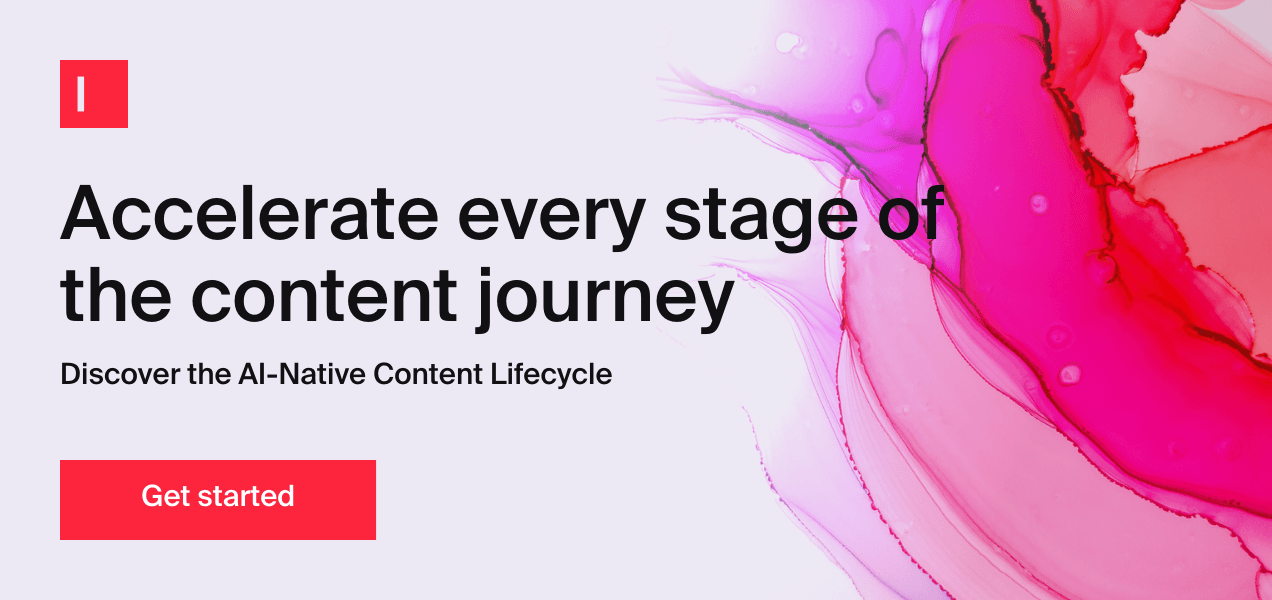
Share
Related articles

AI at Work
Agentic AI for Email: Automating Creative Variation and Hyper-Personalization

Anika Gupta · Product Manager
August 28th, 2025 · 12 min read
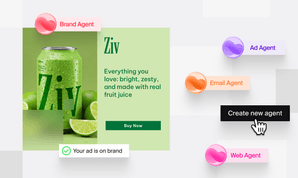
Product
Introducing Typeface Arc Agents

Jason Ing · Chief Marketing Officer
September 16th, 2025 · 6 min read
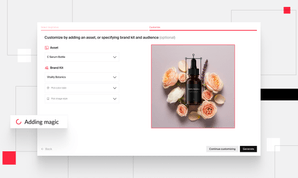
Product
Beyond Prompts: A New Way to Ideate and Create Using Images in Visual Inspiration Studio

Frank Chen · Product Manager
October 9th, 2024 · 6 min read